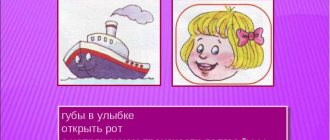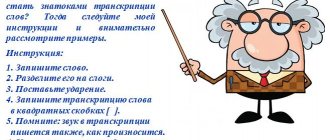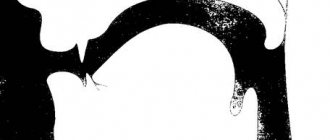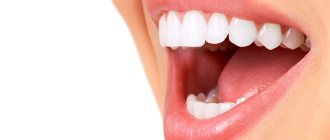The phonetics of the English language is so complex and interesting that we have devoted more than one article to it. Here you can find rules for reading in English, and here you will find dictionaries that teach English words. General information about English phonetics for beginners is presented in this article, and today we want to talk about how English sounds are pronounced correctly. English transcription and a convenient table of English sounds with pronunciation will help us with this.
Why does the pronunciation of English sounds raise so many questions? Primarily due to the discrepancy in the number of letters and sounds in the English language. There are almost half as many letters in the English alphabet (26 letters and 48 sounds). Consequently, the pronunciation of sounds cannot be correlated each with its own letter. Hence the confusion. More precisely, certain conditions that allow you to master English pronunciation correctly.
What determines the pronunciation of English sounds?
As long as we read “to ourselves,” that is, silently, we will not be able to recognize the sound of English words. Only pronunciation out loud allows you to cope with practical phonetics. But in practice, the sounds of the English language and their pronunciation directly depend on the so-called articulation. That is, on how we use the organs of speech.
The organs of speech, or articulatory apparatus, are the larynx, tongue (tip of the tongue, front part of the tongue, middle part and back part of the tongue with the root ), soft and hard palate, teeth of the upper and lower jaw, lips, nasopharynx.
A whole system of organs involved in the creation of speech and voice sounds .
To pronounce all sounds correctly, you need to use all organs of articulation. Moreover, different sounds require different organs. For example, to pronounce voiceless consonant sounds, the vocal cords are not tense and are spread apart. But for vowels and voiced consonants, you need to tense your vocal cords and literally make them vibrate. Of course, this is not done consciously. Correct pronunciation of sounds itself “turns on” certain parts of the articulation apparatus. But for correct English pronunciation it is useful to know exactly how sounds appear.
Position of the vocal apparatus when pronouncing sounds
Lazarenko O. I., Sporysheva E. B.
Vowel sounds
Sound a. The lower jaw is lowered so that the distance between the teeth is approximately two fingers; the tongue lies flat, the tip of the tongue is at the lower front teeth; the lips form an even oval, the palate is raised; vocal cords vibrate.
Sound o. The jaw is lowered less than when pronouncing the sound a (by one and a half fingers); the lips are somewhat extended forward and rounded; the tip of the tongue is lowered and pulled away from the lower front teeth; the back of the tongue is slightly raised towards the soft palate.
The sound of The jaw is lowered to a distance equal to one little finger; the lips are pushed far forward and rounded more than when pronouncing the sound o; the tip of the tongue is moved away from the lower front teeth to a distance greater than when pronouncing the sound o, its back part is raised high to the palate; the velum is raised; vocal cords vibrate.
Sound s. The distance between the teeth is slightly less than when pronouncing the sound y; teeth slightly exposed; the tip of the tongue touches the lower front teeth, its middle part approaches the palate; the velum is raised; vocal cords vibrate.
Sound e. The lower jaw is lowered to the distance of one and a half fingers; teeth slightly exposed; the tip of the tongue touches the lower front teeth, and its middle part is raised to the palate; the velum is raised; the ligaments vibrate.
Sound and. The tip of the tongue touches the lower teeth; the back of the tongue is tense and raised towards the front of the hard palate; the vocal cords vibrate, the lips are slightly stretched and pressed against the exposed teeth; the velum is raised.
Diphthongs
Most letters of the Russian alphabet are signs of one sound. The letters e, ya, ё, yu represent two sounds: the consonant й and the vowel. For example: th+e=e; th+a=i; th+o=е; th+y=y.
For the correct sound of these vowels, you need to know what the position of the speech apparatus is when pronouncing the sound th and each of the vowels e, a, o, u.
Sound y. When pronouncing the sound th, the tip of the tongue touches the lower teeth, and the back of the tongue is tense and raised to the front of the hard palate, the vocal cords vibrate; the soft palate is raised. The th sound is pronounced simultaneously with the vowel sounds.
It is recommended to pronounce vowels alternately in the following pairs: a-z; oh; y-y; uh. At the same time, you will feel how, when moving to iotized sounds, the back of the tongue tenses and rises to the front of the hard palate; the lips, lower jaw and tip of the tongue follow the movements of the articulatory apparatus when pronouncing a, o, y, e.
Consonants
Sounds b, p. Lips tightly closed; the tongue lies freely, the tip is at the lower incisors; when pronouncing the sounds l and b, the velum is raised; a stream of exhaled air directed into the mouth breaks the closed lips, resulting in the sounds of beating; With the sound b, the vocal cords vibrate.
Sounds v, f. The lower lip, with its inner edge, slightly touches the upper teeth; the palatal curtain is raised, the tongue lies freely - the tip is at the lower front teeth; the air blown between the teeth and lip forms the sounds v and f; When sound occurs, the ligaments vibrate.
Sounds d, t, n. The tongue is slightly raised to the palate and its front part is pressed tightly against the upper front teeth; with the sound d and n, the ligaments vibrate; with the sound d and then the velum is raised; with the sound n the velum is lowered.
Sounds k, g, x. The arched back of the tongue touches the hard palate; the velum is raised; an exhaled stream of air breaks between the back of the tongue and the palate - this produces the explosive sounds k and g; if there is a gap between the palate and the back of the tongue, then a long sound x is produced; the velum palatine is raised when the sounds k, g, x are formed; With the sound g, the vocal cords vibrate.
Sounds r, r'. The formation of the sounds p and p' is caused by frequent vibrations of the tip of the tongue under the influence of an exhaled stream of air; with the sound p, vibration occurs at the alveoli of the upper front teeth; when pronouncing r', the tip of the tongue fluctuates at the front upper teeth; vocal cords vibrate.
The sound is m. The lips are slightly closed, the tongue lies freely, as when pronouncing the sound a; exhaled air passes through the nose.
Sounds l, l'. When pronouncing the sound l, the tip of the tongue touches the upper front teeth; the root of the tongue is raised; the velum is raised, the vocal cords vibrate; when pronouncing a sound, the tip of the tongue touches the upper alveoli; the whole tongue is more tense than when pronouncing the sound l.
Sounds z, s. The wide tip of the tongue touches the lower teeth and partly the lower gums, and the front part of the back of the tongue with a small longitudinal groove on it rises to the upper gums and forms a narrow gap with them; the lateral edges of the tongue are pressed tightly against the upper molars; the blown air passes along the groove of the tongue between the teeth and forms the sounds z and s; the mouth is slightly open (by 3 mm); the velum is raised; with the sound z, the vocal cords vibrate; when pronouncing z' and s', the middle part of the back of the tongue is closer to the hard palate (in the sound, this softness is expressed in a slight increase in tone).
Sounds w, sh. The wide tip of the tongue is raised almost to the edge of the upper alveoli, but does not touch the hard palate; a gap forms between the tongue and the hard palate; the lateral edges of the tongue are tightly pressed to the upper molars; the back of the back of the tongue is also raised and forms a second narrowing with the hard palate. A depression forms in the tongue (otherwise called a ladle or cup); the teeth are slightly apart, the lips are slightly moved forward; When a sound is pronounced, the ligaments vibrate.
Compound consonants
The sound ц consists of the sounds t and s, and they are pronounced without explosion and smoothly transition into the sound s.
The sound h consists of the sounds t' and sh', which are pronounced without a noticeable explosion.
The sound u is an elongated soft sound sh'-sh'. When pronouncing sh, the tip of the tongue is slightly more advanced towards the front teeth than when pronouncing sh.
Soft consonants
All consonants can sound hard and soft, with the exception of zh, sh and ts, which are never softened, and ch-shch, which are always pronounced softly.
The softness of consonants always causes significant changes in the position of parts of the speech apparatus.
When soft d, t and n are formed, the position of the parts of the speech apparatus will be slightly different than when pronouncing hard d, t and n. With the sounds t', d' and n', the tip of the tongue is at the lower teeth, and the front part of the back of the tongue tightly touches the alveoli and the front part of the palate. With d' and n', the ligaments vibrate; with t' the vocal cords are calm.
Pronunciation of vowel sounds and their types in English
There are two types of vowel sounds in English:
- Monophthongs
are vowel sounds during the pronunciation of which the articulation does not change throughout the entire period of sound. Example of a monophthong: [ɔː]. - Diphthongs
are vowel sounds that have two components. When pronouncing a diphthong, the speech organs first take one position to pronounce the first component, and then change position to pronounce the second component. The first component is called the diphthong nucleus and is longer and more distinct. The second component of the diphthong sounds shorter and gives the sound a certain “shade” of sound. Diphthong example: [aɪ].
Consonant sounds are divided into a greater number of varieties:
1)
Labial
consonants:
labiolabials are articulated with both lips: [w], [m],
,
labiodental are pronounced with the lower lip and upper teeth: [f], [v].
2)
Front lingual
consonants:
interdental, when the surface of the front part of the tongue forms an incomplete barrier with the upper teeth: [θ], [ð]
apical-alveolar, the anterior edge of the tongue is raised to the alveolar arch: [t], [d], [n], [l], [s], [z], [∫], [ʒ], [t∫], [ dʒ]
kakuminal-zaalveolar, the anterior edge of the tongue is raised upward and slightly curved towards the posterior slope of the alveoli: [r].
3) Middle language
consonants, the barrier is formed by raising the middle part of the tongue to the hard palate: [j].
4) Rear lingual
consonants that are articulated by raising the back of the tongue to the soft palate: [k], [g], [ŋ].
5) Laryngeal
there is only one consonant in English: [h].
6) Stops
consonants:
, , [t], [d], [k], [g], [m], [n], [ŋ], [t∫], [dʒ].
7) Slotted
consonants: [f], [v], [θ], [ð], [s], [z], [∫], [ʒ], [h], [w], [l], [r], [j].
 Occlusive
Occlusive
noisy consonants:
explosive, when the complete obstruction opens, air escapes from the oral cavity, producing an explosion noise:
, , [t], [d], [k], [g]
affricates, when the opening of the speech organs, forming a complete barrier, occurs smoothly: [t∫], [dʒ].
9) Fricatives
consonants: [f], [v], [θ], [ð], [s], [z], [∫], [ʒ], [h].
10) Nasals
sonants, a complete obstruction is formed in the oral cavity, the soft palate descends, and air exits through the nasal cavity: [m], [n], [ŋ].
11) Oral
sonants: [w], [r], [j], [l].
English sounds and their pronunciation
Reading aloud and pronouncing English sounds is the best, if not the only, way to get rid of the Russian accent in your conversation. And for beginners learning English, this is an opportunity to immediately remember how to pronounce sounds in English correctly. All of them are collected in tables of English sounds with pronunciation:
English vowel sounds. English Vowel Sounds | ||
| Sound | Description | Example words |
| iː | Long vowel sound. When pronouncing the sound [iː], the tongue is in the front of the mouth. The tip of the tongue touches the lower teeth. The middle part of the tongue is raised high to the hard palate. The lips are somewhat stretched. | feel read |
| ɪ | Short vowel sound. When pronouncing the sound [ɪ], the tongue is in the front of the mouth. The middle part of the tongue is raised to the hard palate, but not as high as when pronouncing the Russian sound [i]. The tip of the tongue is at the lower teeth, the lips are slightly stretched. | unit wind |
| ʊ | Short vowel sound. Pronounced with a slight rounding of the lips. When pronouncing the sound [ʊ], the tongue is in the back of the mouth, but not very far. The back of the back of the tongue is raised to the front of the soft palate, but not as high as when pronouncing the Russian sound [у]. The lips are slightly rounded, but hardly move forward. | put look |
| uː | Long vowel sound. When pronouncing the sound [uː], the tongue is in the back of the mouth. The back of the tongue is significantly raised. The lips are rounded, but slightly. Towards the end of pronouncing the sound, the lips become more rounded. | noon blue |
| e | Short vowel sound. When pronouncing the vowel sound [e], the tongue is in the front of the mouth. The tip of the tongue is at the base of the lower teeth, the middle part of the tongue is raised to the hard palate. The lips are slightly stretched. When pronouncing the sound [e], you should not lower your lower jaw. | bed desk |
| ə | Short neutral vowel sound. This sound is always unstressed, so it is very easily influenced by neighboring sounds. When pronouncing the sound [ə] at the beginning or middle of words, the entire tongue is slightly raised. The sound [ə] should not be similar to the Russian sounds [e], [a] or [s]. | again under |
| ɜː | Long vowel sound. When pronouncing the sound [ɜː], the tongue is raised, the back of the tongue lies flat. The tip of the tongue is located at the lower teeth. The teeth are slightly exposed, the distance between the upper and lower teeth is small. The lips are tense and slightly stretched. | work burn |
| ɔː | Long vowel sound. When pronouncing the sound [ɔː], the tongue is in the back of the mouth. The back of the tongue is raised towards the soft palate. The lips are slightly pushed forward and significantly rounded. | small morning |
| æ | Semi-long vowel sound. When pronouncing the sound [æ], the mouth is quite wide open, the tongue is in the front of the oral cavity, lies flat in the mouth, and its middle part is slightly raised. The tip of the tongue touches the lower teeth. The lips are somewhat stretched, and the corners of the lips are slightly pulled to the sides. There is no such sound in the Russian language. | bad exam |
| ʌ | Short vowel sound. When pronouncing the sound [ʌ], the mouth is half-open, the lips are neutral, the tongue is slightly moved back. The back of the tongue is slightly raised. | nut cut |
| ɑː | Long vowel sound. When pronouncing the sound [ɑː], the tongue is in the back of the mouth. The back of the tongue is slightly raised. The tip of the tongue is pulled away from the lower teeth, the lips are neutral, that is, not stretched or pushed forward. You should not open your mouth wide. | dark are |
| ɒ | Short vowel sound. When pronouncing the sound [ɒ], the tongue is in the back of the mouth. The back of the tongue is slightly raised. The mouth is wide open, lips are rounded. | not wash |
The length of vowel sounds, which is indicated by a colon in transcription, is very important. If you do not take into account the duration of vowels, you can confuse the meaning of words. For example: the short sound ship [ʃɪp] - ship and the long sound sheep [ʃiːp] - ram.
English diphthongs. English Diphthongs | ||
| Sound | Description | Example words |
| ɪə | Diphthong. The core is the vowel sound [ɪ]. After pronouncing the sound [ɪ], the tongue moves towards the center in the direction of the neutral vowel [ə], which has a connotation of the sound [ʌ]. | real beer |
| eɪ | The core of a diphthong is the vowel sound [e]. After pronouncing [e], the tongue makes a slight upward movement in the direction of the sound [ɪ], but without achieving its full formation. | say table |
| ʊə | The core of a diphthong is the vowel sound [ʊ]. After pronouncing the sound [ʊ], the tongue moves towards the center in the direction of the neutral vowel [ə], which has a connotation of the sound [ʌ]. | tour jury |
| ɔɪ | The core of a diphthong is a vowel, which is a sound intermediate between [ɒ] and [ɔː]. After pronouncing the first element of the diphthong, the tongue moves in the direction of the vowel sound [ɪ]. | boy noise |
| əʊ | The diphthong core is close in sound to the vowel sound [ɜː], after pronouncing which the tongue makes a slight upward movement and moves back in the direction of the vowel sound [ʊ]. At the beginning of the pronunciation of the diphthong, the lips are slightly rounded, then gradually the lips are rounded even more. | coat flow |
| eə | The core of the diphthong is a vowel, similar to the Russian sound [e] in the word this, after the pronunciation of which the tongue moves in the direction of the neutral vowel [ə] with a hint of the sound [ʌ]. | where are they |
| aɪ | The core of the diphthong is a vowel, similar to the Russian sound [a] in the word tea, when pronounced the tongue is in the front of the mouth and lies flat. The tip of the tongue touches the lower teeth, the lips are slightly stretched. After pronouncing the first element of the diphthong, the tongue moves upward in the direction of the sound [ɪ]. | five my |
| aʊ | The core of the diphthong is a vowel, similar to the Russian sound [a] in the word tea, when pronounced the tongue is in the front of the mouth and lies flat. The tip of the tongue touches the lower teeth, the lips are slightly stretched. After pronouncing the first element of the diphthong, the tongue moves back in the direction of the sound [ʊ], which should be very weak. | how cloud |
profiles
Diagram 1. Sound
And buKVE A
Features of articulation. The mouth is wide open. The lips are calm (not tense or rounded). The tip of the tongue is located at the lower teeth, the tongue is flat. The exhaled air does not meet any obstacles in the mouth. The vocal cords are working, the throat is trembling (there is a voice). Characteristic. The sound [A] is a vowel.
Letter color designation. The letter is colored red.
Scheme 2. Sound I letter O
Features of articulation.
The lips are rounded and pushed forward.
The tip of the tongue moves slightly away from the lower teeth, the back of the tongue is raised. The exhaled air does not meet any obstacles in the mouth. The vocal cords are working, the throat is trembling (there is a voice). Characteristic.
The sound [O] is a vowel.
Letter color designation.
The letter is colored red.
Diagram 3. Sound
And buKVE
U
Features of articulation. The lips are rounded and strongly pushed forward. The tip of the tongue extends from the lower teeth, the back of the tongue is curved. The exhaled air does not meet any obstacles in the mouth. The vocal cords are working, the throat is trembling (there is a voice). Characteristic. The sound [U] is a vowel.
Letter color designation. The letter is colored red.
Scheme 4. Sound I letter Y
Features of articulation. The lips are slightly stretched. The teeth are visible. The tip of the tongue extends from the lower teeth, the back of the tongue is strongly arched. The exhaled air does not meet any obstacles in the mouth. The vocal cords are working, the throat is trembling (there is a voice). Characteristics Sound [Y] - vowel.
Letter color designation. The letter is colored red.
Diagram 6. Sound
And
the letter
P
Features of articulation. The lips are closed and open under the pressure of exhaled air. The tip of the tongue extends slightly from the lower teeth. The tongue is flat.
The vocal cords are resting, the throat is not trembling (no voice). Characteristic. The sound [P] is a hard, voiceless consonant. Letter color designation. The letter is colored blue.
Diagram 7. Sound I letter B
Features of articulation.
The lips are closed and open under the pressure of exhaled air.
The tip of the tongue extends slightly from the lower teeth. The tongue is flat. The vocal cords are working, the throat is trembling (there is a voice). Characteristic.
The sound [B] is a hard voiced consonant.
Letter color designation.
The letter is colored blue.
Diagram 8. Sound I letter T
Features of articulation. The tip of the tongue is pressed against the upper teeth, the back of the tongue is lowered. Under the pressure of exhaled air, the tongue comes off the teeth. The vocal cords are resting, the throat is not trembling (no voice). Characteristics The sound [T] is a hard, voiceless consonant. Letter color designation. The letter is colored blue.
Diagram 9. Sound
And
the letter D
Features of articulation.
The tip of the tongue is pressed against the upper teeth, the back of the tongue is lowered.
Under the pressure of exhaled air, the tongue comes off the teeth. The vocal cords are working, the throat is trembling (there is a voice). Characteristic.
The sound [D] is a hard voiced consonant.
Letter color designation.
The letter is colored blue.
Diagram 10. Sound
And
the letter C
Features of articulation.
The teeth are close together.
The lips are slightly stretched. The tip of the tongue rests on the lower teeth, the back is arched. The vocal cords are resting, the throat is not trembling (no voice). Characteristic.
The sound [S] is a hard, voiceless consonant.
Letter color designation.
The letter is colored blue.
Scheme 11. Sound AND letter 3
Features of articulation.
The teeth are close together.
The lips are slightly stretched. The tip of the tongue rests on the lower teeth, the back is arched. The vocal cords are working, the throat is trembling (there is a voice). Characteristic.
Sound [3] is a hard voiced consonant.
Letter color designation.
The letter is colored blue.
Diagram
12. Sound I letter
K
Features of articulation.
The tip of the tongue extends slightly from the lower teeth, the back of the tongue is curved steeply and touches the palate.
Under the pressure of exhaled air, the back of the tongue comes off the palate. The vocal cords are resting, the throat is not trembling (no voice). Characteristic.
The sound [K] is a hard, voiceless consonant.
Letter color designation.
The letter is colored blue.
Diagram 13. Sound
And
the letter G
Features of articulation
The tip of the tongue extends slightly from the lower teeth, the back of the tongue is curved steeply and touches the palate.
Under the pressure of exhaled air, the back of the tongue comes off the palate. The vocal cords are working, the throat is trembling (there is a voice). Characteristic.
The sound [G] is a hard voiced consonant.
Letter color designation.
The letter is colored blue.
Diagram 14. Sound I letter F
Features of articulation.
The lower lip is slightly retracted and pressed against the upper teeth, the upper lip is slightly raised. The upper teeth are visible. The tip of the tongue extends slightly from the lower teeth, the tongue is flat. The exhaled air breaks into the gap between the upper teeth and lower lip. The vocal cords are resting, the throat is not trembling (no voice).
Characteristic.
The sound [F] is a hard, voiceless consonant.
Letter color designation.
The letter is colored blue.
Diagram 15. Sound
And
the letter B
Features of articulation. The lower lip is slightly retracted and pressed against the upper teeth, the upper lip is slightly raised. The upper teeth are visible. The exhaled air breaks into the gap between the upper teeth and lower lip. The vocal cords are working, the throat is trembling (there is a voice). Characteristic. The sound [B] is a hard voiced consonant. Letter color designation. The letter is colored blue.
Diagram 16. Sound
And the letter Ш
Features of articulation.
The lips are pushed forward and rounded. The tip of the tongue is raised towards the front of the palate, but does not touch it. The lateral edges of the tongue are pressed against the upper molars. The back of the tongue is raised. The shape of the tongue resembles a cup.
The vocal cords are resting, the throat is not trembling (no voice). Characteristic.
The sound [Ш] is always a hard, voiceless consonant.
Letter color designation.
The letter is colored blue.
Diagram 17. Sound
And
the letter Z
Features of articulation. The lips are pushed forward and rounded. The tip of the tongue is raised towards the front of the palate, but does not touch it. The lateral edges of the tongue are pressed against the upper molars. The back of the tongue is raised. The shape of the tongue resembles a cup.
The vocal cords are working, the throat is trembling (there is a voice). Characteristic. The sound [Zh] is always a hard voiced consonant. Letter color designation. The letter is colored blue.
Diagram 18. Sound I letter Ch
Features of articulation.
The lips are slightly pushed forward and rounded. The tip of the tongue touches the palate (behind the tubercles). The lateral edges of the tongue are pressed tightly against the upper molars. The back of the tongue is raised. Under the pressure of exhaled air, the tip of the tongue comes off the palate. The vocal cords are resting, the throat is not trembling (no voice).
Characteristic.
The sound [H] is always a soft, dull consonant.
Letter color designation.
The letter is colored green.
Diagram 19. Sound I letter Ш
Features of articulation.
The lips are slightly pushed forward and rounded. The tip of the tongue is raised to the cusps behind the upper teeth. The lateral edges of the tongue are pressed tightly against the upper molars. The back of the tongue is raised. The tongue is tense. The vocal cords are resting, the throat is not trembling (no voice).
Characteristic.
The sound [Ш] is always a soft, voiceless consonant.
Letter color designation.
The letter is colored green.
Diagram 20. Sound I letter C
Features of articulation.
Initially, the back of the tongue is sharply curved and touches the tubercles behind the upper teeth, the tip of the tongue rests on the lower teeth.
Then the back of the tongue lowers to the position occupied when pronouncing the sound [C], and the tip of the tongue remains in place. The vocal cords are resting, the throat is not trembling (no voice). Characteristic.
The sound [Ц] is always a hard, voiceless consonant.
Letter color designation.
The letter is colored blue.
Diagram 21. Sound I letter M
Features of articulation. The lips are closed and do not open, the exhaled air passes through the nose. The tip of the tongue extends slightly from the lower teeth, the tongue is flat.
The vocal cords are working, the throat is trembling (there is a voice). Characteristic. The sound [M] is a hard voiced consonant. Letter color designation. The letter is colored blue.
Diagram 22. Sound I letter N
Features of articulation.
The tip of the tongue is pressed against the upper teeth, the back of the tongue is lowered.
The exhaled air passes through the nose. The vocal cords are working, the throat is trembling (there is a voice). Characteristic.
Sound (Н] - a hard voiced consonant.
Letter designation by color.
The letter is colored blue.
Diagram 23. Sound
And buKVE X
Features of articulation.
The tip of the tongue moves slightly away from the lower teeth, the back of the tongue is curved steeply.
The vocal cords are resting, the throat is not trembling (no voice). Characteristic.
The sound [X] is a hard voiceless consonant.
Letter color designation.
The letter is colored blue.
Diagram 24. Sound
And the letter L
Features of articulation.
The tip of the tongue rests on the upper teeth or on the cusps behind the upper teeth. The middle part of the back of the tongue is lowered, the back of the back of the tongue is raised, the lateral edges of the tongue are lowered. The shape of the tongue resembles a saddle. The exhaled air passes along the sides of the tongue. The vocal cords are working, the throat is trembling (there is a voice).
Characteristic.
The sound [L] is a hard voiced consonant.
Letter color designation.
The letter is colored blue.
Diagram 25. Sound
And
the letter P
Features of articulation.
The tip of the tongue touches the cusps behind the upper teeth.
The lateral edges of the tongue are pressed against the upper molars. The shape of the tongue resembles a spoon. The tip of the tongue trembles under the pressure of exhaled air. The vocal cords are working, the throat is trembling (there is a voice). Characteristic.
The sound
[R]
is a hard voiced consonant.
Letter color designation.
The letter is colored blue.
Diagram 26. Sound [YA]
And
the letter I
Features of sound articulation
[Y]. The lips are stretched into a smile. The teeth are visible. The tip of the tongue is pressed against the lower teeth, the back of the tongue is curved steeply.
The vocal cords are working, the throat is trembling (there is a voice).
Features of sound articulation [A].
The mouth is wide open. The lips are calm (not tense or rounded). The tip of the tongue is located at the lower teeth, the tongue is flat.
The exhaled air does not meet any obstacles in the mouth. The vocal cords are working, the throat is trembling (there is a voice).
Characteristic.
The sound [YA] is a vowel.
Letter color designation.
The letter is colored red.
Diagram 27. Sound [YO]
And buKVE E
Features of sound articulation
[Y]. The lips are stretched into a smile. The teeth are visible. The tip of the tongue is pressed against the lower teeth, the back of the tongue is curved steeply. The vocal cords are working, the throat is trembling (there is a voice).
Features of sound articulation [O].
The lips are rounded and pushed forward. The tip of the tongue moves slightly away from the lower teeth, the back of the tongue is raised. The exhaled air does not meet any obstacles in the mouth. Vocal cords work, throat trembles (there is a voice)
Characteristic.
The sound [YO] is a vowel.
Letter color designation.
The letter is colored red.
Diagram 28. Sound [YU] AND letter
Features of sound articulation
[Y]. The lips are stretched into a smile. The teeth are visible. The tip of the tongue is pressed against the lower teeth, the back of the tongue is curved steeply.
The vocal cords are working, the throat is trembling (there is a voice).
Features of sound articulation [U].
The lips are rounded and strongly pushed forward. The tip of the tongue extends from the lower teeth, the back of the tongue is curved.
The exhaled air does not meet any obstacles in the mouth. The vocal cords are working, the throat is trembling (there is a voice).
Characteristic.
The sound [YU] is a vowel.
Letter color designation.
The letter is colored red.
Diagram 29. Sound
And
the letter I
Features of articulation.
The lips are stretched into a smile.
The teeth are visible. The tip of the tongue is pressed against the lower teeth, the back of the tongue is strongly arched. The exhaled air does not meet any obstacles in the mouth. The vocal cords are working, the throat is trembling (there is a voice). Characteristic.
The sound [I] is a vowel.
Letter color designation.
The letter is colored red.
Scheme zo. Sound [Y E] and letter E
Features of sound articulation
[Y]. The lips are stretched into a smile. The teeth are visible. The tip of the tongue is pressed against the lower teeth, the back of the tongue is curved steeply.
The vocal cords are working, the throat is trembling (there is a voice).
Features of sound articulation [E].
The lips are stretched into a smile. The tip of the tongue is located at the lower teeth, the back of the tongue is raised.
The exhaled air does not meet any obstacles in the mouth. The vocal cords are working, the throat is trembling (there is a voice).
Characteristic.
The sound [YE] is a vowel.
Letter color designation.
The letter is colored red.
Diagram 31. Sound [P']
Features of articulation.
The lips are closed and open under the pressure of exhaled air. The tip of the tongue is pressed against the lower teeth, the back of the tongue is arched. The vocal cords are resting, the throat is not trembling (no voice).
Characteristic.
The sound [P'] is a soft, voiceless consonant.
Letter color designation.
The letter is colored green.
Diagram 32. Sound
[B ' ]
Features of articulation.
The lips are closed and open under the pressure of exhaled air.
The tip of the tongue is pressed against the lower teeth, the back of the tongue is arched. The vocal cords are working, the throat is trembling (there is a voice). Characteristic.
The sound [B'] is a soft voiced consonant.
Letter color designation.
The letter is colored green.
Diagram 33. Sound [T']
Features of articulation. The tip of the tongue rests on the lower teeth, the back of the tongue is curved into a steep hill and is pressed with the front part against the tubercles behind the upper teeth. Under the pressure of exhaled air, the front part of the tongue comes off the tubercles.
The vocal cords are resting, the throat is not trembling (no voice). Characteristic. The sound [G] is a soft, dull consonant. Letter color designation. The letter is colored green.
Features of articulation.
The tip of the tongue rests on the lower teeth, the back of the tongue is curved into a steep hill and is pressed with the front part against the tubercles behind the upper teeth. Under the pressure of exhaled air, the front part of the tongue comes off the tubercles.
The vocal cords are working, the throat is trembling (there is a voice). Characteristic.
The sound [D'] is a soft voiced consonant.
Diagram 34. Sound
[D'] Letter color designation.
The letter is colored green.
Diagram 35. Sound
[С']
Features of articulation.
The teeth are close together.
The lips are stretched into a smile. The tip of the tongue rests on the lower teeth, the back of the tongue is arched. The vocal cords are resting, the throat is not trembling (no voice). Characteristic.
The sound [С'] is a soft, voiceless consonant.
Letter color designation.
The letter is colored green.
Diagram 36. Sound [3′]
Features of articulation.
The teeth are close together.
The lips are stretched into a smile. The tip of the tongue rests on the lower teeth, the back of the tongue is arched. The vocal cords are working, the throat is trembling (there is a voice). Characteristic.
The sound [3′] is a soft voiced consonant.
Letter color designation.
The letter is colored green.
Diagram 37. Sound
[K']
Features of articulation.
The tip of the tongue is pressed against the lower teeth. The back of the tongue is curved steeply and touches the palate. Under the pressure of exhaled air, the back of the tongue comes off the palate.
The vocal cords are resting, the throat is not trembling (no voice). Characteristic.
The sound [K'] is a soft, voiceless consonant.
Letter color designation.
The letter is colored green.
Diagram 38. Sound
[G']
Features of articulation.
The tip of the tongue is pressed against the lower teeth.
The back of the tongue is curved steeply and touches the palate. Under the pressure of exhaled air, the back of the tongue comes off the palate. The vocal cords are working, the throat is trembling (there is a voice). Characteristic.
The sound [G'] is a soft voiced consonant.
Letter color designation.
The letter is colored green.
Diagram 39. Sound
[F']
Features of articulation.
The lower lip is slightly retracted and pressed against the upper teeth, the upper lip is slightly raised. The upper teeth are visible. The tip of the tongue is pressed against the lower teeth, the back of the tongue is arched. The exhaled air breaks into the gap between the upper teeth and lower lip. The vocal cords are resting, the throat is not trembling (no voice).
Characteristic.
The sound [F'] is a soft, voiceless consonant.
Letter color designation.
The letter is colored green.
Diagram 40. Sound [B']
Features of articulation. The lower lip is slightly retracted and pressed against the upper teeth, the upper lip is slightly raised. The upper teeth are visible. The tip of the tongue is pressed against the lower teeth, the back of the tongue is arched. The exhaled air breaks into the gap between the upper teeth and lower lip. The vocal cords are working, the throat is trembling (there is a voice).
Characteristics Sound [B'] is a soft voiced consonant.
Letter color designation. The letter is colored green.
Diagram 41. Sound
[ M ' ]
Features of articulation. The lips are closed and do not open, the exhaled air passes through the nose. The tip of the tongue is pressed against the lower teeth, the back of the tongue is arched. The vocal cords are working, the throat is trembling (there is a voice).
Characteristic. The sound [M'] is a soft voiced consonant. Letter color designation. The letter is colored green.
Diagram 42. Sound [Н' ]
Features of articulation. The tip of the tongue rests on the lower teeth, the back of the tongue is curved into a steep hill and is pressed with the front part against the tubercles behind the upper teeth. The exhaled air passes through the nose. The vocal cords are working, the throat is trembling (there is a voice). Characteristics The sound [Н'] is a soft voiced consonant. Letter color designation. The letter is colored green.
Diagram 43. Sound [L']
Features of articulation.
The lips are stretched into a smile. The front of the tongue touches the cusps behind the upper teeth. The middle part of the back of the tongue is raised. The back of the back of the tongue is lowered. The tongue is tense. The exhaled air passes along the sides of the tongue.






